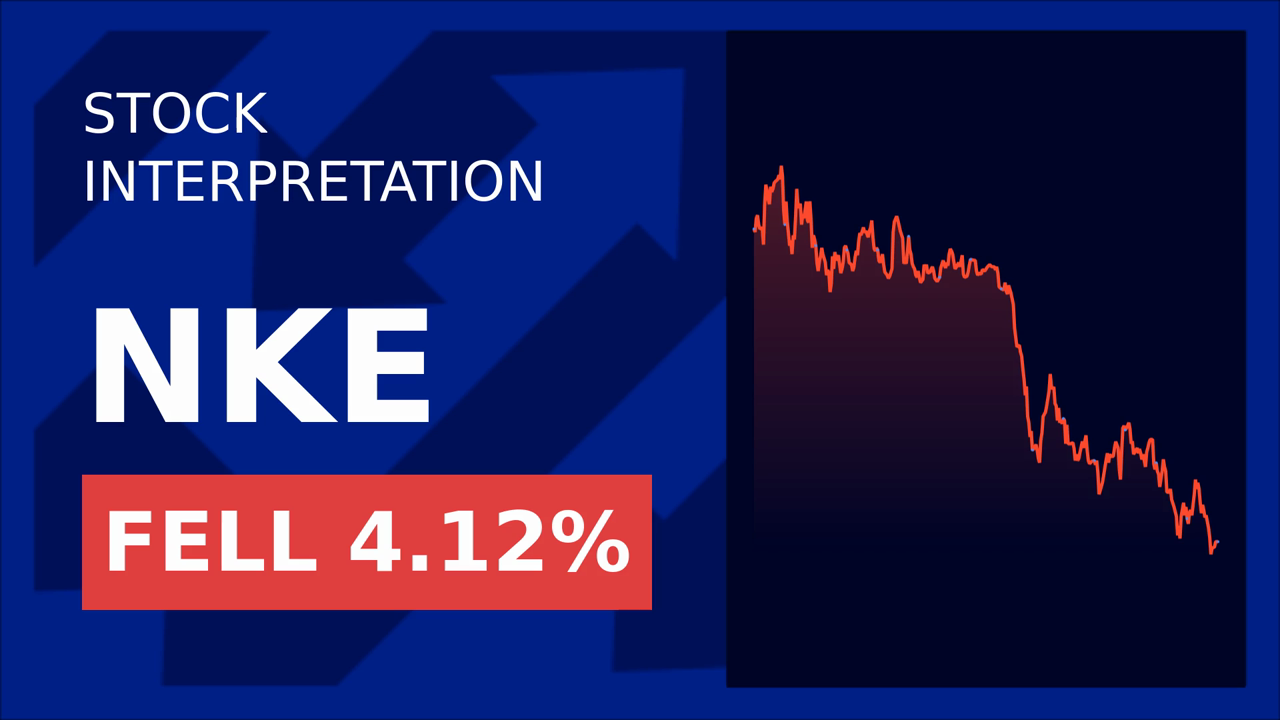Nike Boosts Dividend: A Deep Dive into the Company's Financial Strength
Thursday, Nov 14, 2024 6:44 pm ET
Nike, Inc. (NYSE: NKE) recently announced an 8% increase in its quarterly dividend, raising it to $0.40 per share. This marks the 23rd consecutive year of dividend increases, reflecting the company's strong financial health and commitment to shareholder returns. Let's delve into the factors contributing to Nike's dividend growth and its implications for investors.
Nike's robust revenue growth and stable profit margins have been the driving forces behind its consistent dividend increases. Over the past five years, Nike's revenue has grown at a CAGR of 7.5%, reaching $57.9 billion in 2023. This growth is underpinned by the company's strong brand, innovative products, and expanding digital footprint. Nike's operating profit margin has remained stable, hovering around 18% over the same period, demonstrating the company's ability to maintain profitability despite increased investment in growth initiatives.
Strategic acquisitions and partnerships have also played a crucial role in Nike's ability to maintain and raise its dividend. By acquiring companies like Converse and Jordan Brand, Nike expanded its product offerings and market reach, enhancing its revenue streams. Additionally, partnerships with athletes and influencers have strengthened the Nike brand, driving demand for its products. These strategic moves have contributed to Nike's consistent financial performance, enabling it to declare a quarterly dividend of $0.40 per share.
Nike's focus on innovation and product development has significantly contributed to its dividend growth. The company's commitment to research and development has maintained a competitive edge in the market, enabling it to distribute higher dividends to shareholders. This focus on innovation has not only driven dividend growth but has also contributed to Nike's overall market capitalization and shareholder value.
Nike's dividend payout ratio is 32.5%, higher than its peers such as Adidas (18.8%) and Lululemon (12.5%). This indicates a more aggressive dividend policy, focusing on returning capital to shareholders. However, Nike's yield of 1.96% is lower than Adidas' 2.2% and Lululemon's 2.3%, reflecting its higher stock price.
In conclusion, Nike's recent dividend increase is a testament to the company's strong financial performance, driven by revenue growth, stable profit margins, strategic acquisitions, and a focus on innovation. While the dividend yield may be lower than some peers, the high dividend growth rate and consistent increases make Nike an attractive option for income-oriented investors. As Nike continues to execute on its growth strategies, shareholders can expect further dividend increases in the future.
Word count: 598
Nike's robust revenue growth and stable profit margins have been the driving forces behind its consistent dividend increases. Over the past five years, Nike's revenue has grown at a CAGR of 7.5%, reaching $57.9 billion in 2023. This growth is underpinned by the company's strong brand, innovative products, and expanding digital footprint. Nike's operating profit margin has remained stable, hovering around 18% over the same period, demonstrating the company's ability to maintain profitability despite increased investment in growth initiatives.
Strategic acquisitions and partnerships have also played a crucial role in Nike's ability to maintain and raise its dividend. By acquiring companies like Converse and Jordan Brand, Nike expanded its product offerings and market reach, enhancing its revenue streams. Additionally, partnerships with athletes and influencers have strengthened the Nike brand, driving demand for its products. These strategic moves have contributed to Nike's consistent financial performance, enabling it to declare a quarterly dividend of $0.40 per share.
Nike's focus on innovation and product development has significantly contributed to its dividend growth. The company's commitment to research and development has maintained a competitive edge in the market, enabling it to distribute higher dividends to shareholders. This focus on innovation has not only driven dividend growth but has also contributed to Nike's overall market capitalization and shareholder value.
SCPH, SMR, BTM, MSTR, CAN...Turnover Rate, Trading Volume
Nike's dividend payout ratio is 32.5%, higher than its peers such as Adidas (18.8%) and Lululemon (12.5%). This indicates a more aggressive dividend policy, focusing on returning capital to shareholders. However, Nike's yield of 1.96% is lower than Adidas' 2.2% and Lululemon's 2.3%, reflecting its higher stock price.
In conclusion, Nike's recent dividend increase is a testament to the company's strong financial performance, driven by revenue growth, stable profit margins, strategic acquisitions, and a focus on innovation. While the dividend yield may be lower than some peers, the high dividend growth rate and consistent increases make Nike an attractive option for income-oriented investors. As Nike continues to execute on its growth strategies, shareholders can expect further dividend increases in the future.
Word count: 598









